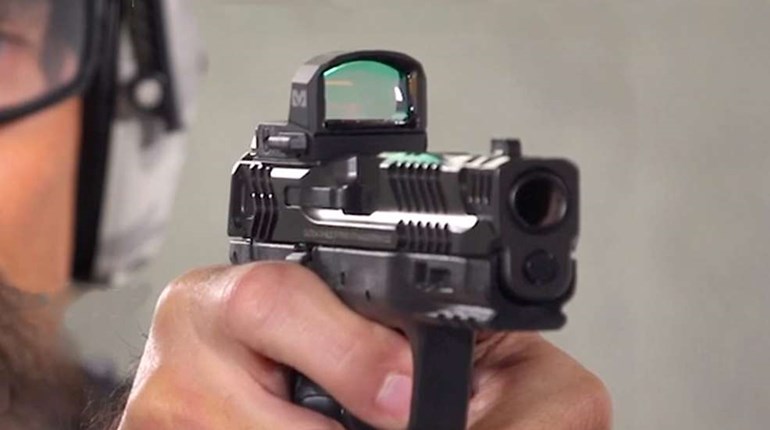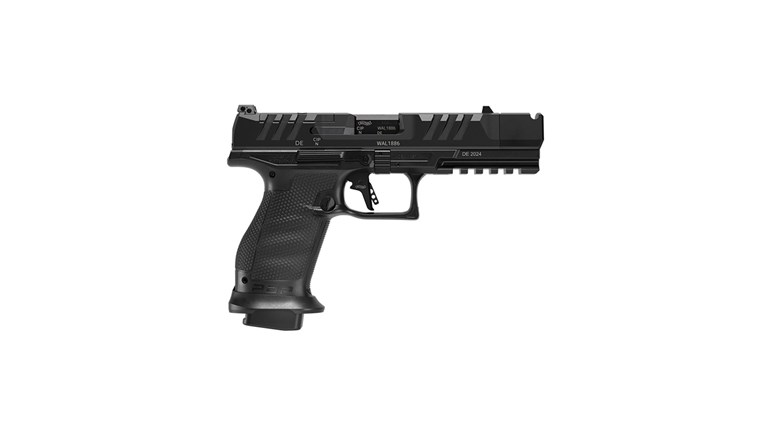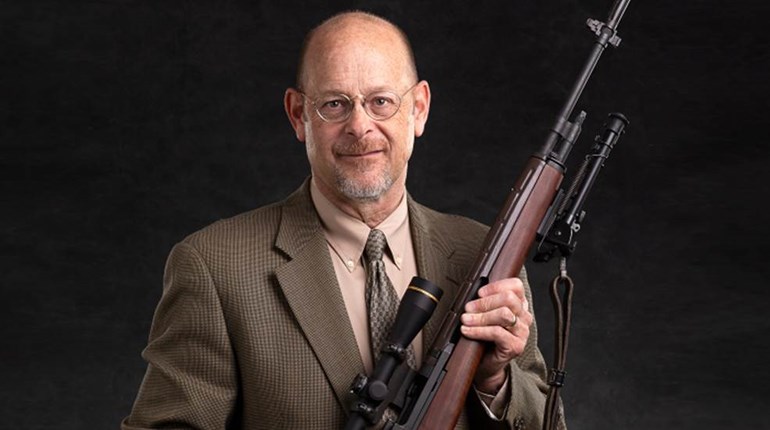
It’s always gratifying to scratch an itch for readers, and we apparently did so with a recent Carry Life column dealing with preparing for competition.
If competition seems somewhat afield from standard carry concerns, reconsider: What most carry practitioners think of as “normal” practice is almost always done at a self-set pace. Actual defensive shooting, however, will virtually never be done on these terms. Competition adds two important “arrows” to your defensive quiver under a single guise—time pressure. The first is breaking the “perfect shot when you wish” paradigm and replacing it with “an acceptable shot when you must.”
What most carry practitioners think of as “normal” practice is almost always done at a self-set pace.The second is arguably even more important. Like it or not, we tend to subconsciously “baby” our range gear. As a consequence, that gear—firearms, holsters, ammunition, etc.—may or may not be up to the rigors of actual defensive or protective employ. Nothing, repeat nothing, will expose this undeserved trust like competition.
The downside of the whole proposition falls understandably under the heading of “apprehension”: Unless you’ve competed before, most Carry Lifers rightly, wisely suspect there’s a lot they may need to know beforehand. Your feedback says we hit one of these nails squarely with our rundown of range commands, so here’s a second: How to avoid the most common disqualification reason while simultaneously upgrading your safe gun handling in “freebie” fashion.
Ergo, we introduce the 180 Rule.
In terms of getting ousted from a competitive event, we see “180 violations” most frequently, and it’s not some local/regional phenomenon. Troy McManus, director of the National Range Officers Institute, confirms this violation as “by far the most common reason for disqualifications in USPSA (matches).” It’s worth learning about, we suggest.
Simply, this is where a competitor gets the barrel of his or her firearm more than 90 degrees off the centerline of the specified course of fire. Ninety to the left plus 90 to the right are “safe” (for the math challenged, that sum is 180, hence the name); beyond that, not so much. Unless, for some reason, you want to see fellow shooters run like hell and/or hit the deck; been there, done that, no thanks. Just don’t expect smiles and laughter from these normally jovial, tolerant folks—it’s not remotely funny.
The underlying rationale for the rule is elementary. Downrange and to the sides are bullet stopping surfaces: Range walls if indoors, or berms if outdoors. Beyond these limits, geometry decrees that your muzzle and presumably loaded firearm are creeping closer and closer to spectators, range officers and other shooters. That’s never a good thing.
Simply, this is where a competitor gets the barrel of his or her firearm more than 90 degrees off the centerline of the specified course of fire.Subordinate to the geometry of the violation are two main causes. And both are preventable as long as you keep your head. While it’s hard to quantify, we suspect magazine changes are where most folks run afoul of the 180 rule, followed closely by passing a target too quickly. We’ll take them in turn.
In terms of reloading, there’s an unsuspected link—for the new competitive shooter at any rate—to handedness. Strange, but true: When a right-handed shooter moves to his or her right, he or she almost has to try to get the muzzle up-range. This is because the reloading manipulation occurs on the body’s midline, and the geometry of the hand and shoulder keep the muzzle pointed down range even if the shooter is facing the full 90 degrees to the right. Try this (with an unloaded firearm, of course), and you’ll see what we mean. Our own ersatz measure shows we’ve got roughly 40 degrees to play with. That’s easily safe, and easily verifiable for the RO.
But turn to the left the same distance while reloading, and the roof, so to speak, will fall on you. That arm/shoulder relationship now advances the consumption of those safe 90 degrees, rather than retarding it. If our rough math holds, we can only turn 50 degrees to the left before the muzzle gets up-range.
This is why there are specific techniques for reloading as you move against your handedness (lefties have the identical problem, just in reverse—moving to their right), and also why, given a choice, you move toward the strong hand in a competitive course of fire, not away from it. We’ll get to those techniques for reloading too, we promise—just not today.
The second 180 rule hazard is running by a target too quickly. Again, there’s a handedness aspect to this, though as a practical matter it’s less of a problem than with reloads. Here, the best solution is not to go too fast in the first place. Remember that your job early on in competition is to be safe and get your hits in that order—speed is a byproduct, and for later in your competitive adventures.
If you do get even close to being downrange of a target you need to engage, stop: You are perfectly within the rules to back up and re-engage as long as your muzzle stays pointed in the “safe” 180 degrees. Don’t turn around to get up range (major “duh,” we hope), as this just makes the muzzle direction problem vastly worse.
… as it coalesces with the most basic NRA Safety Rule of all: Don’t let that muzzle cover anything you aren’t willing to destroy.Handedness re-enters the equation here mostly on second shots if you’re in a two-shots-per-target game like USPSA or IDPA. The 180 problem can appear between the first shot and the second unless you stop moving. Like reloading, this happens on the non-dominant side: The first shot takes the hands close to the left-side angular limit, but momentum carries you past the 180 in the .15 to .35 hundredths of a second it takes to make the second shot. Lefties, this happens to you more often on the right. Narrow apertures—ports or simulated doorways—make this problem worse on either side. Get used to the idea that, early on, the best solution is to slow way down for these “passing” shots, or even stop.
In terms of how you can ingrain this, we think there are better ways to implement the 180 rule as opposed to thinking about numbers, or berm characteristics or lane dimensions. Our own is imagining a stretchy string running between the firing pin of our firearm and a single point at the back of the berm or lane. This mnemonic means that tension increases as we move the muzzle away from that ultra-safe central point no matter which way we move, or how much room or angle we think we have to work with. We’d stop well short of saying this will work for everyone, but this device has kept us mostly out of trouble for a good, long time.
Two notes will wrap us up. You may have bridled at our earlier assertion that left and right will always be bullet stopping surfaces. Of course, and especially outdoors or in ad hoc shooting circumstances, this may not always be true. Here, the 180 degree rule needs to become the 30 degree rule, or even the 10 degree rule as corresponds to the dimensions of your backstop, and as it coalesces with the most basic NRA safety rule of all: Don’t let that muzzle cover anything you aren’t willing to destroy.
The second relates to several things we’ll cover in the future. Like most rules, competition canons are enhancements of the basics, and meant to create multiple, overlapping layers of all-but-impenetrable safety. If you really look at the numbers, you’ll see they are astonishingly successful, and therefore worth learning even if you never plan to compete (but you should plan to!).
Now mind those muzzle angles, and Carry on.
Complete NROI rules can be found here.
Frank Winn has been studying arms and their relationship to tyranny, meaningful liberty and personal security all his adult life. He has been a firearms safety/shooting instructor for more than 20 years, and earned state, regional and national titles in several competitive disciplines.


































